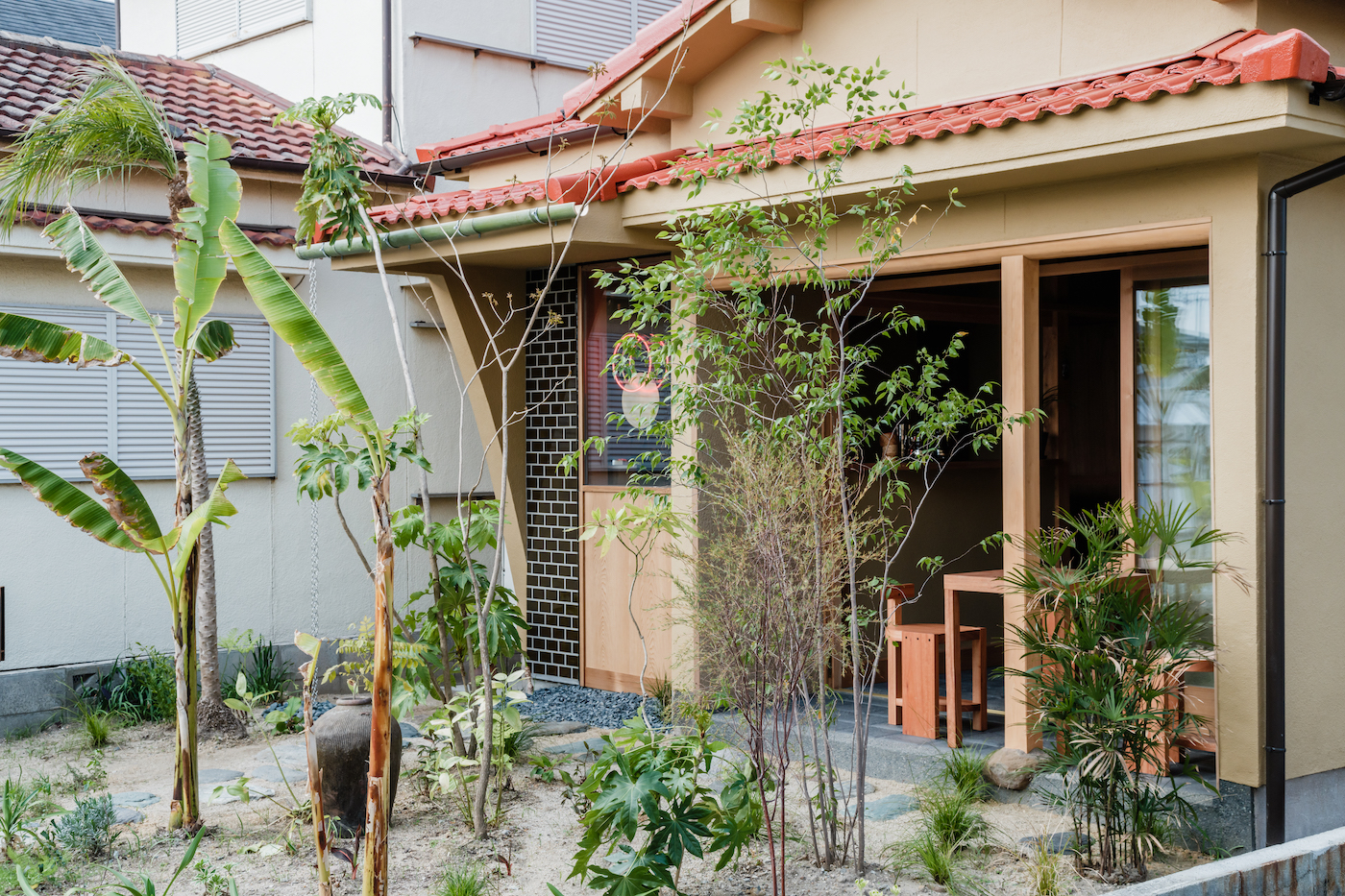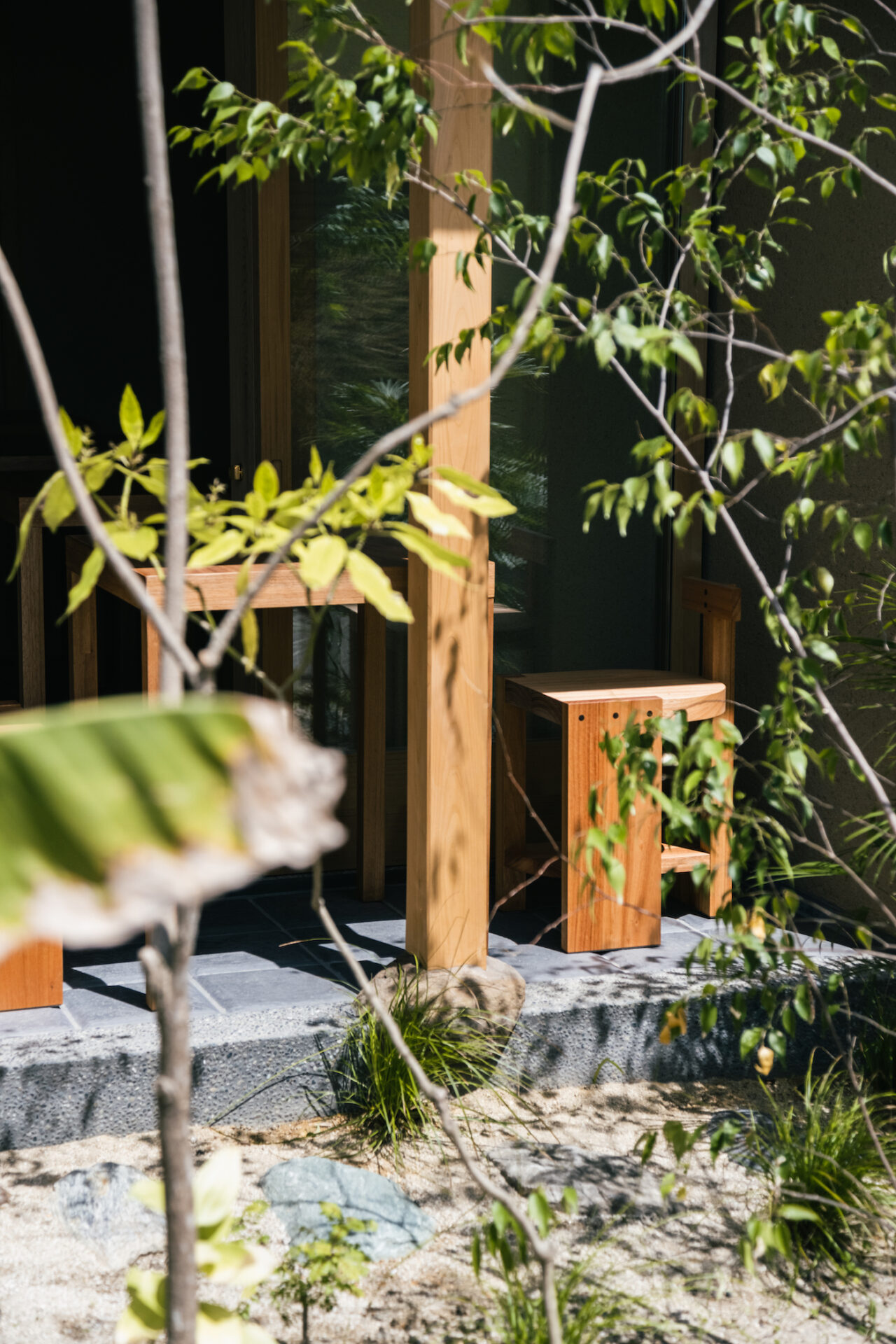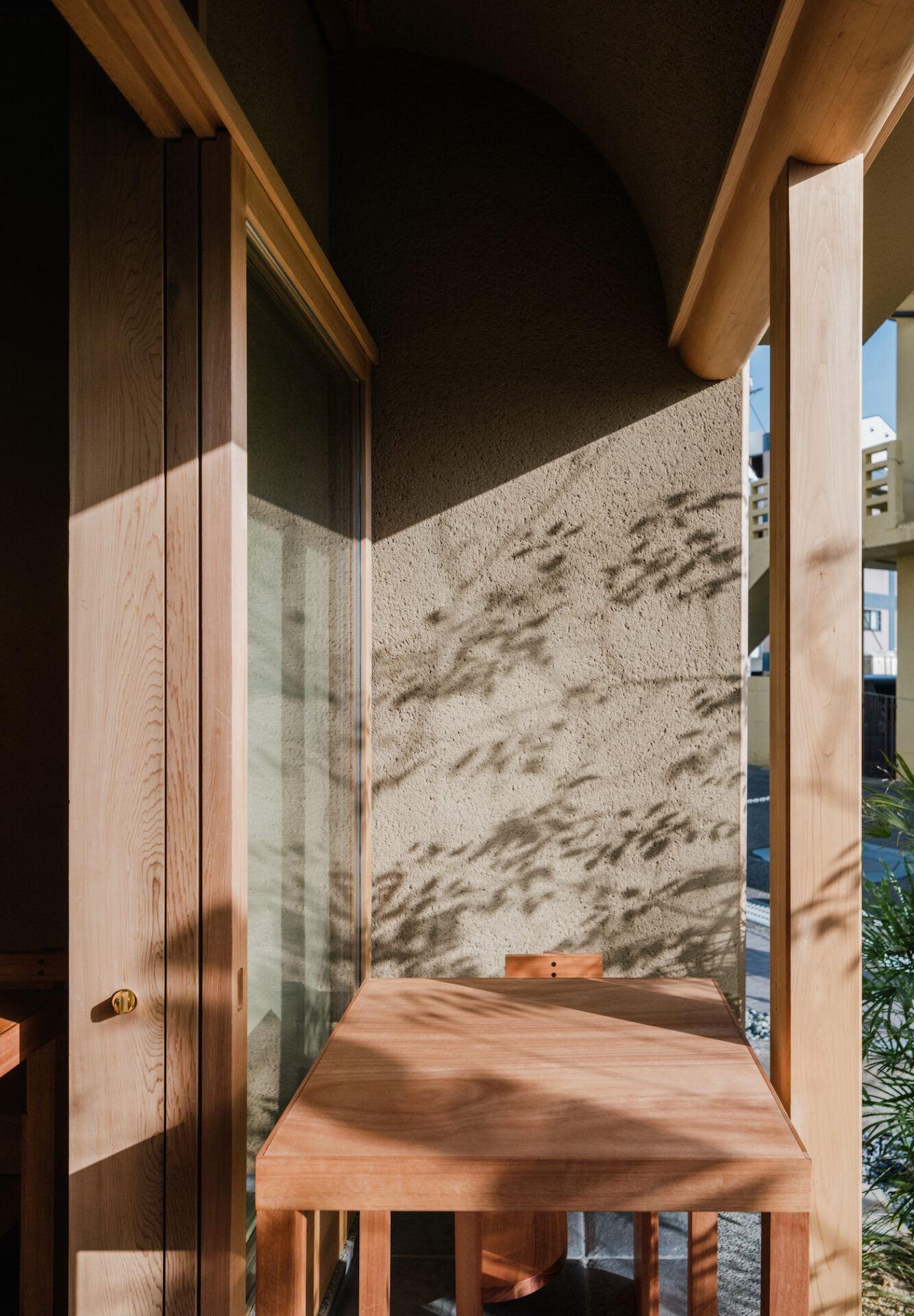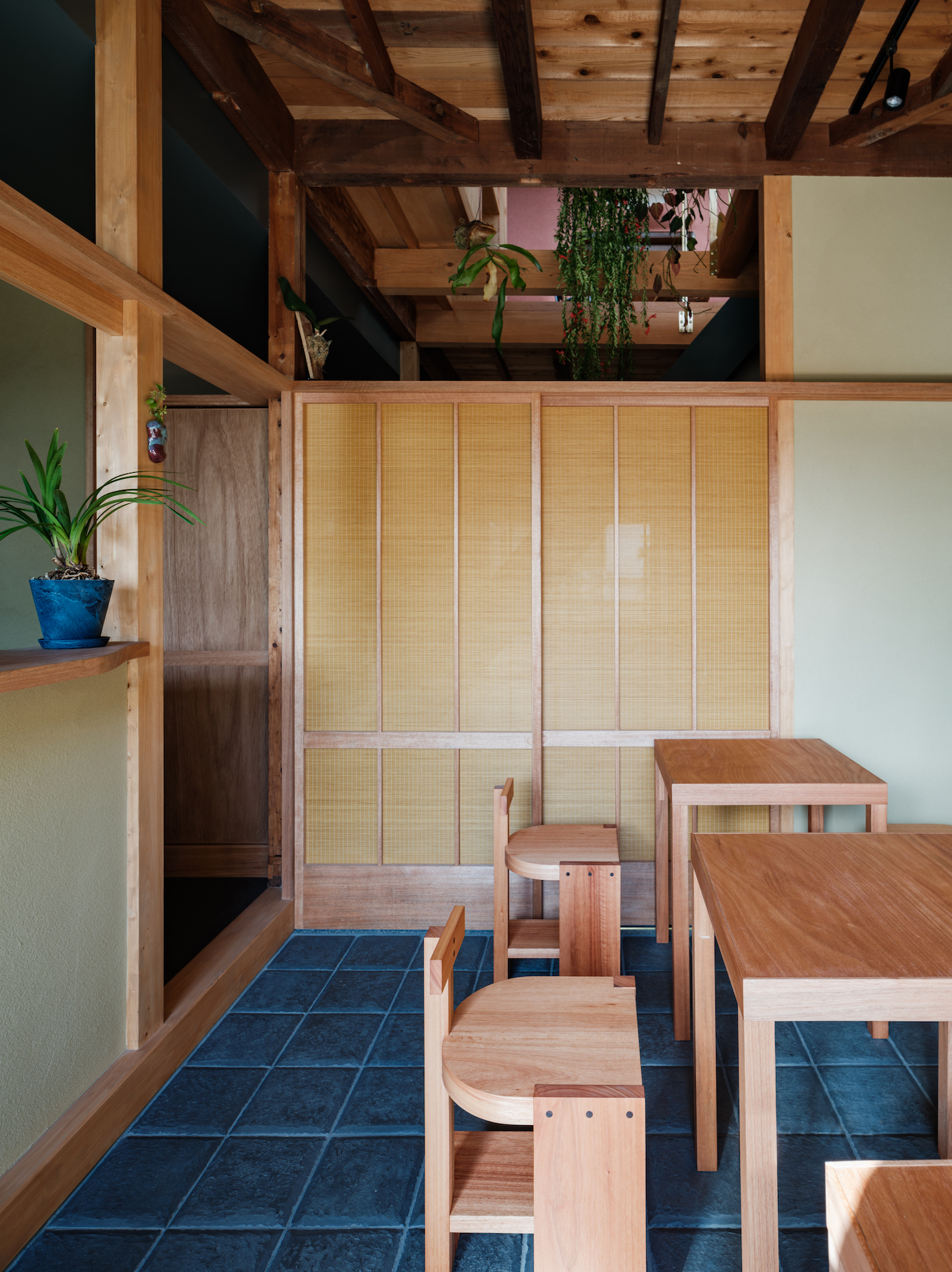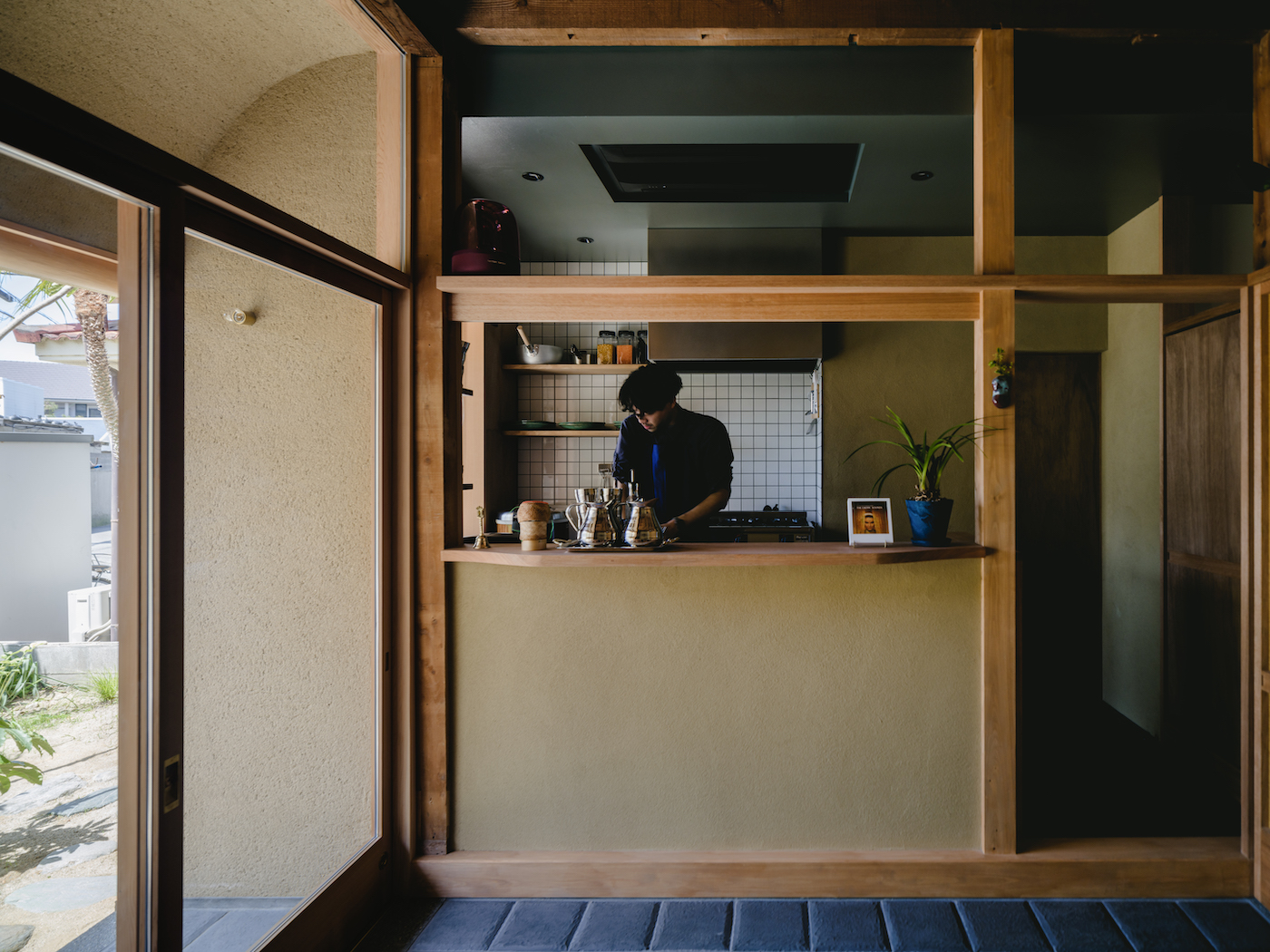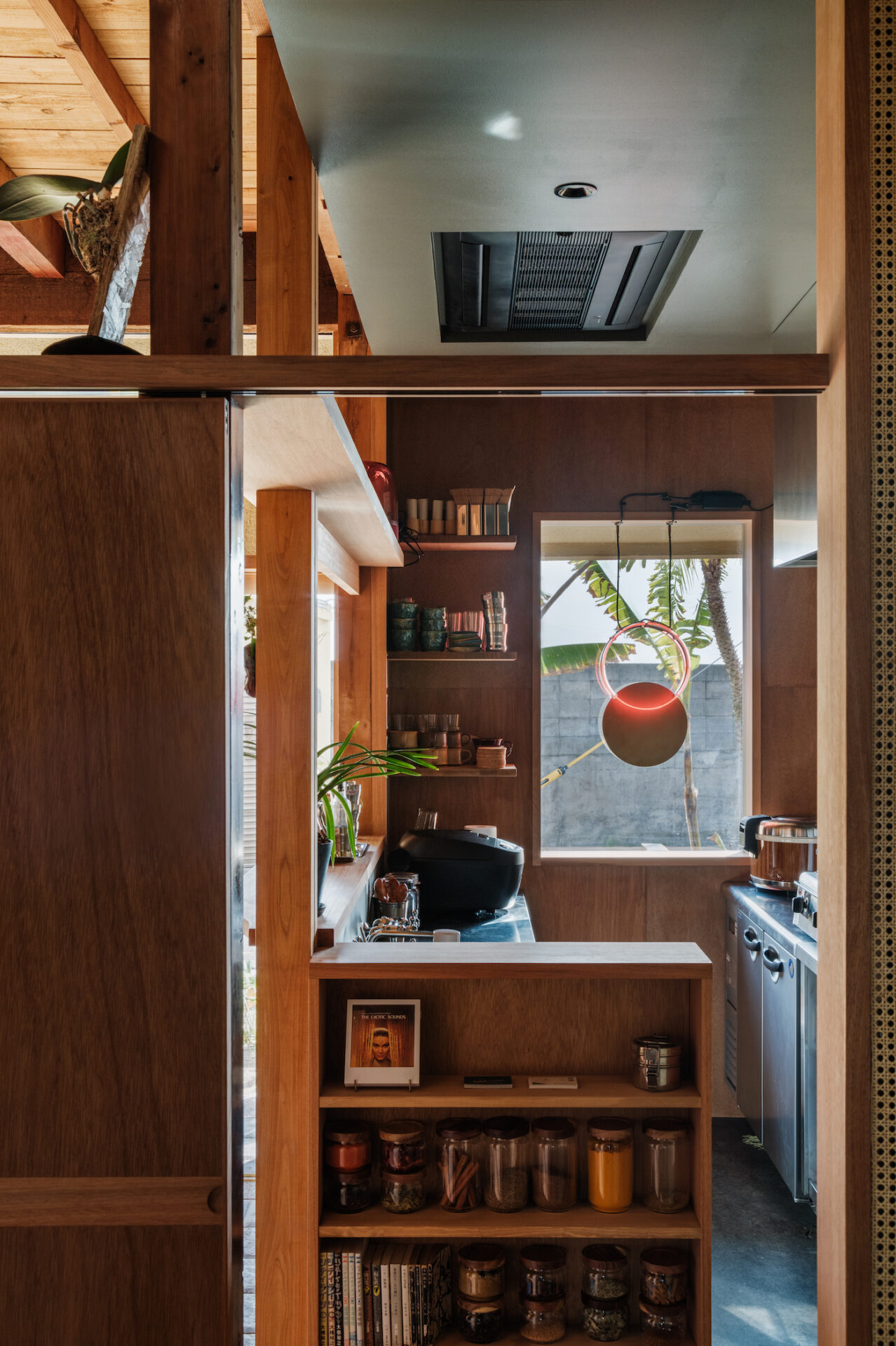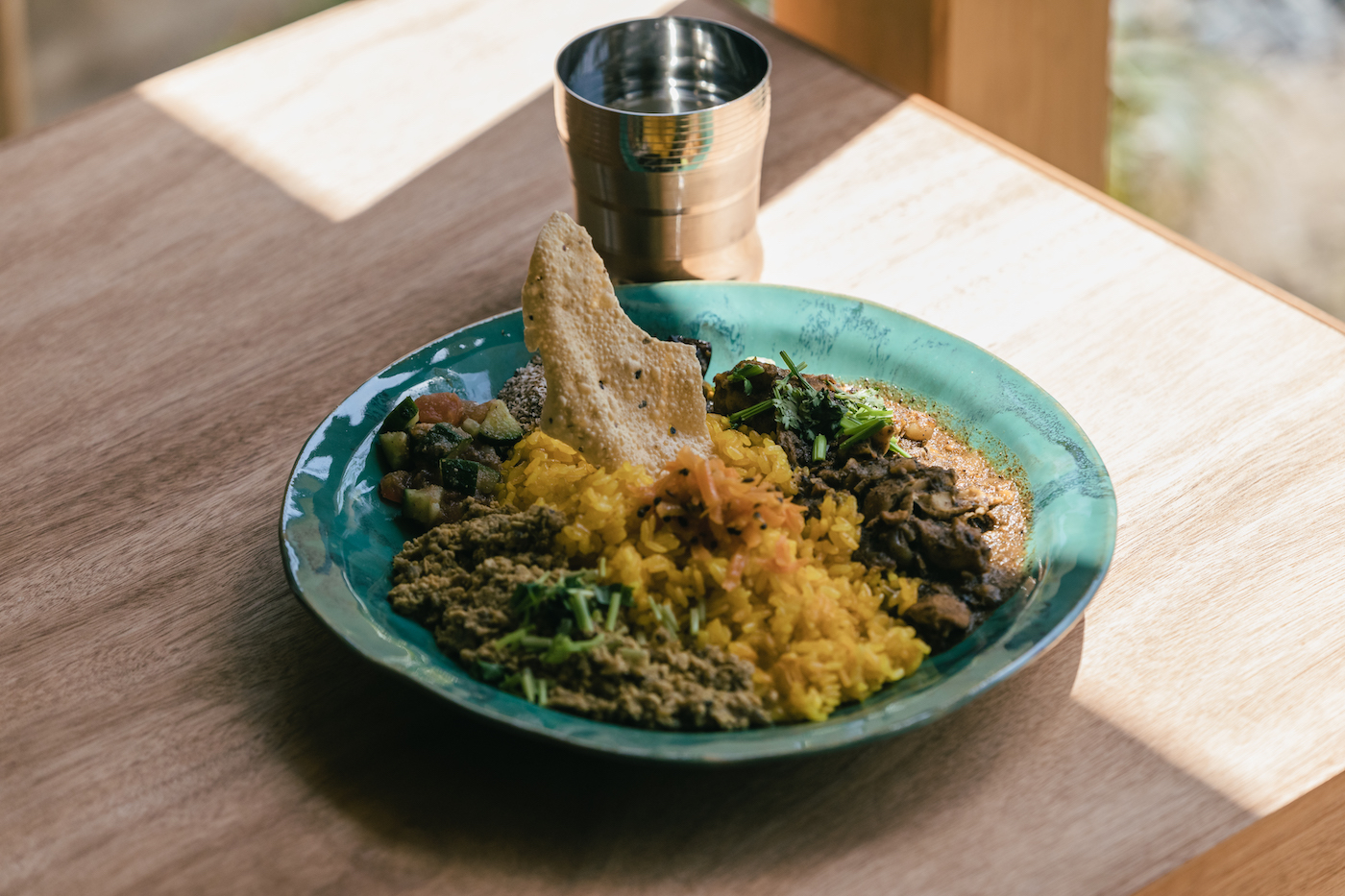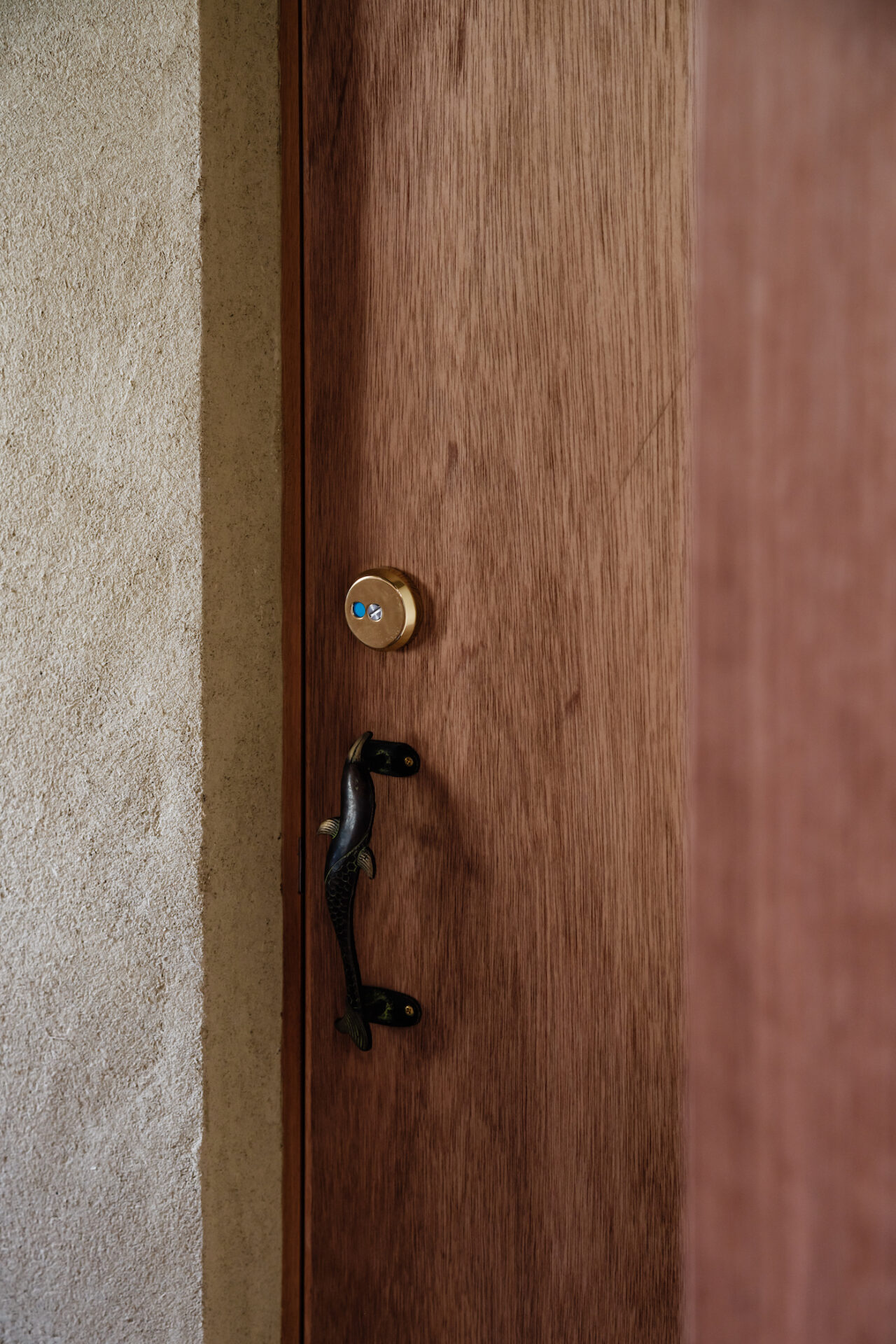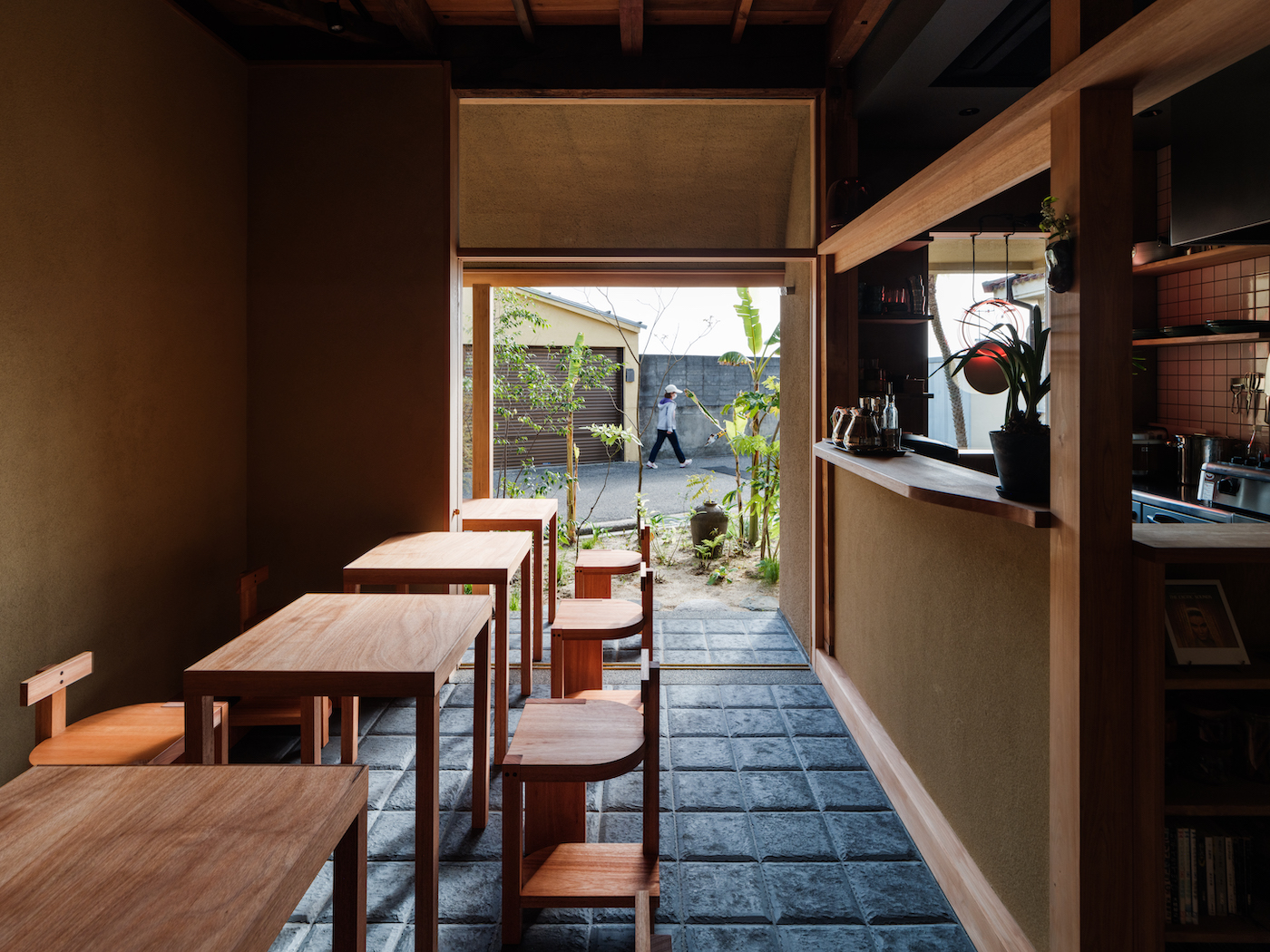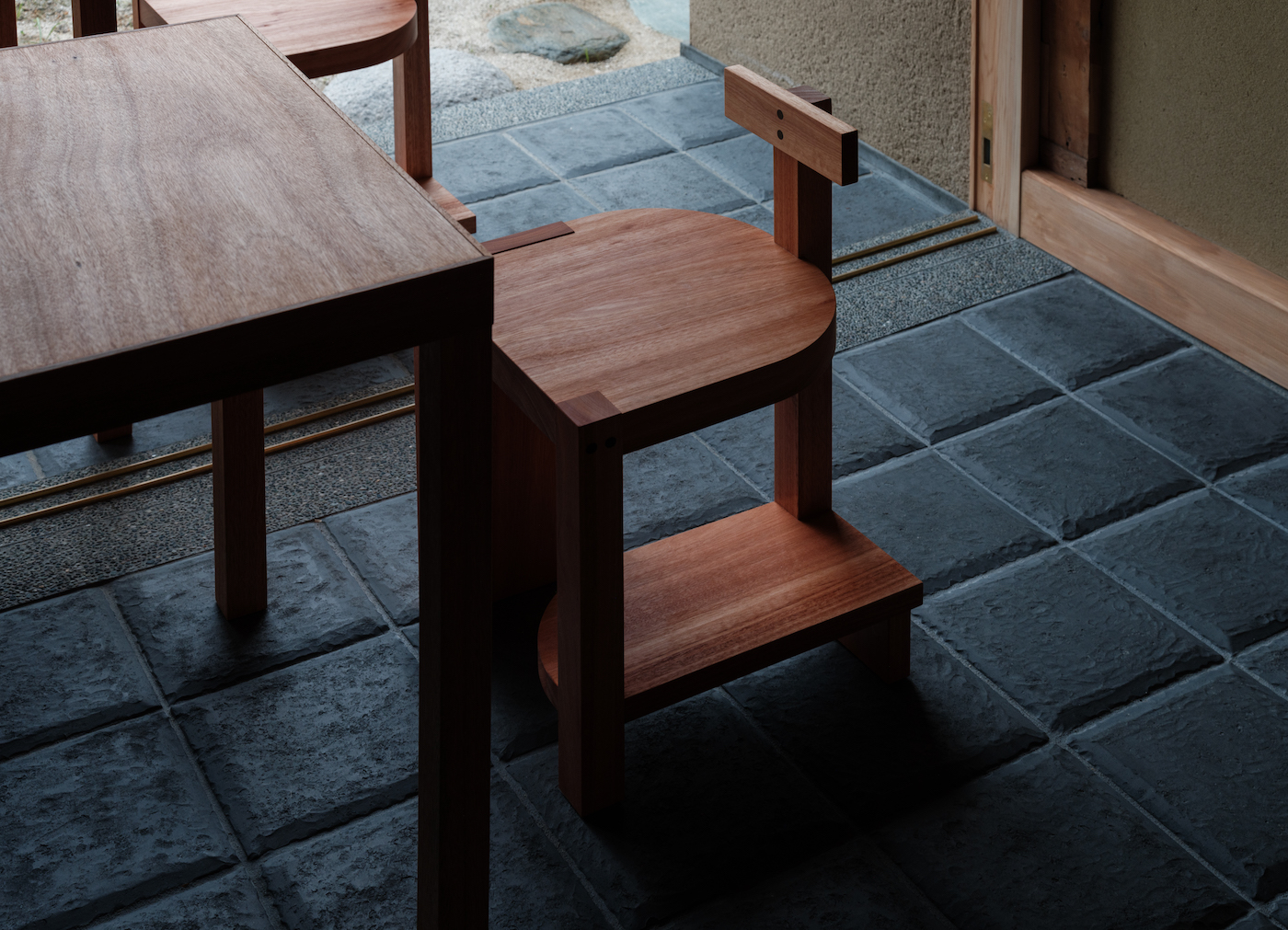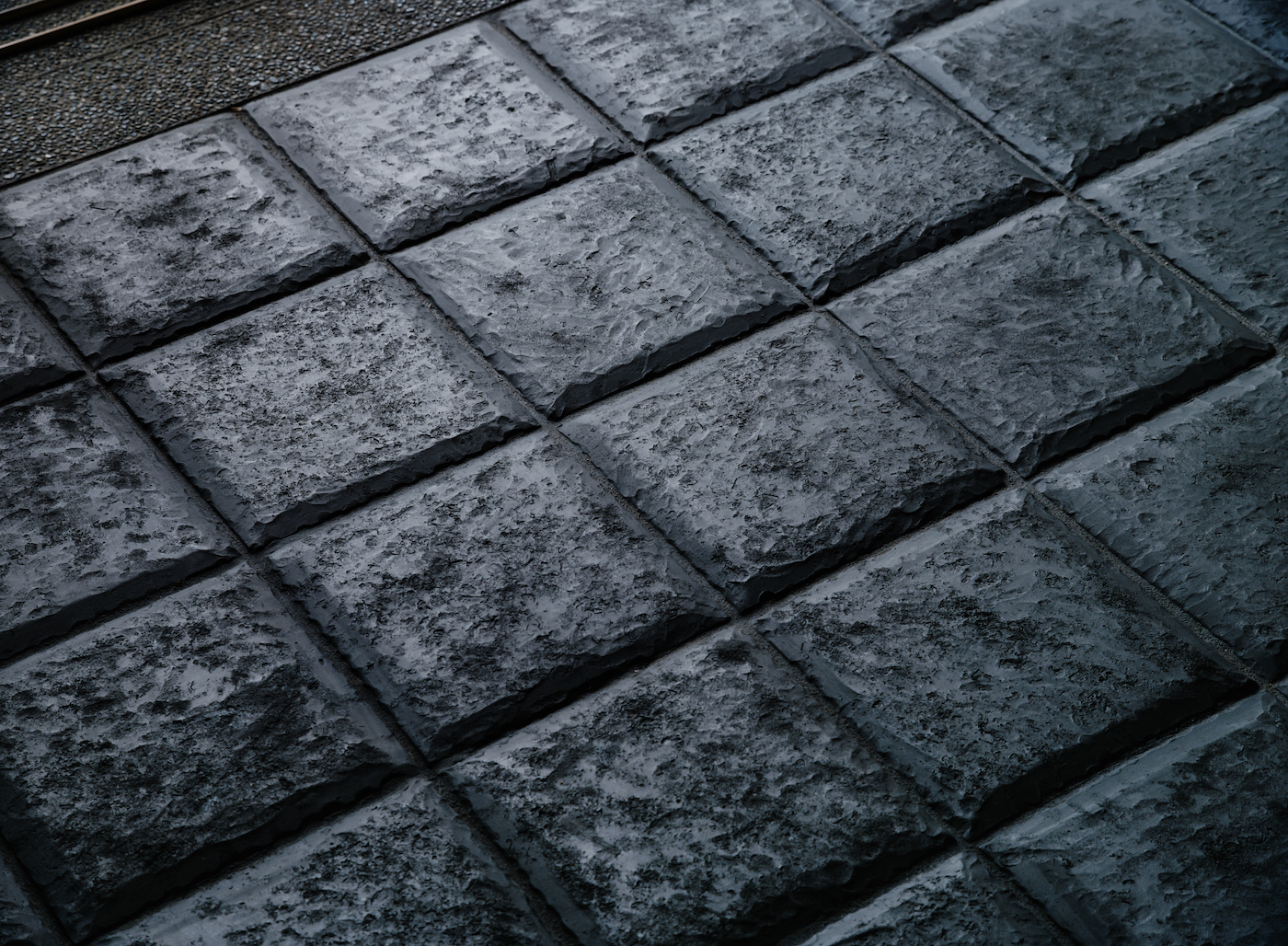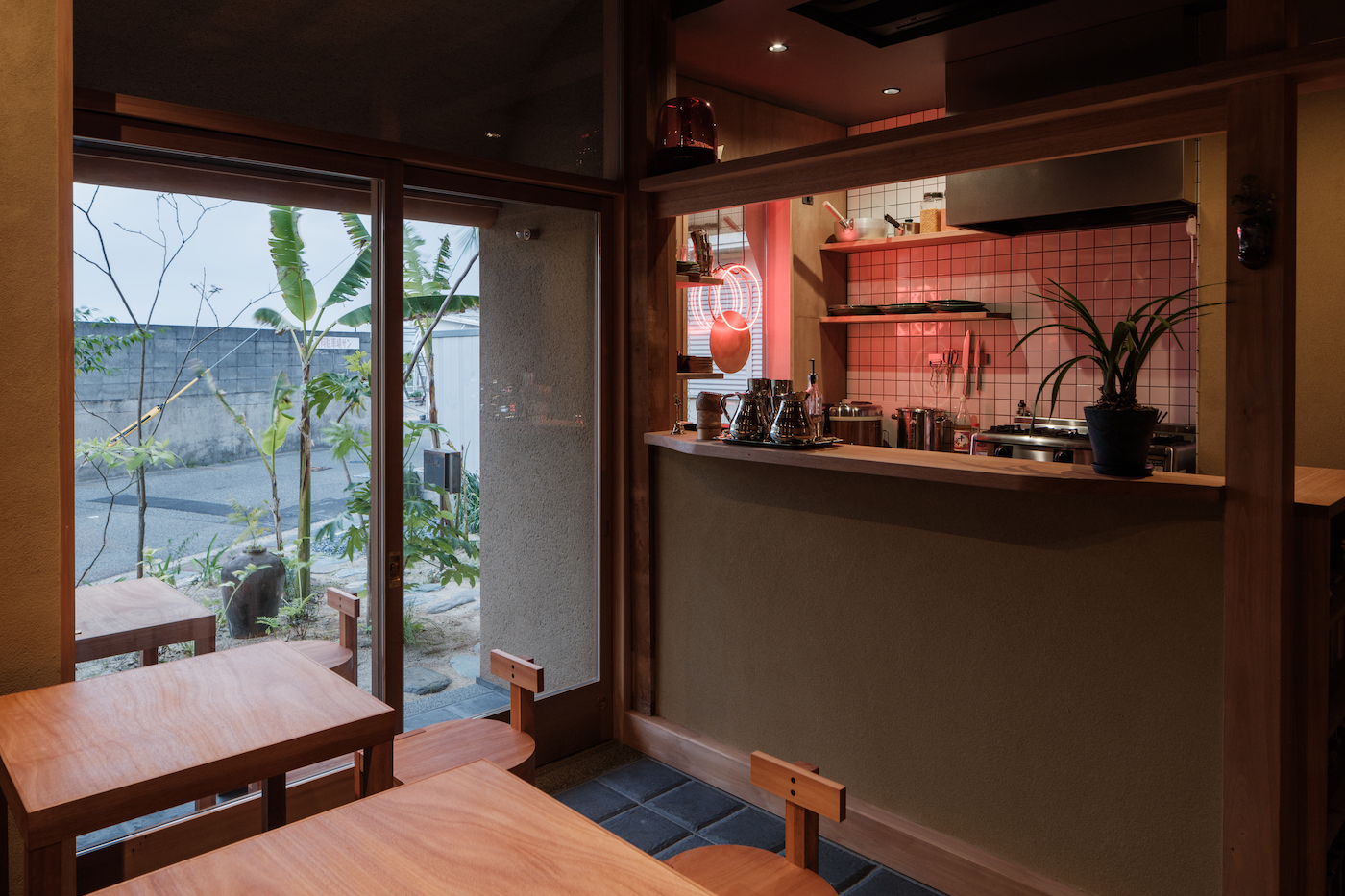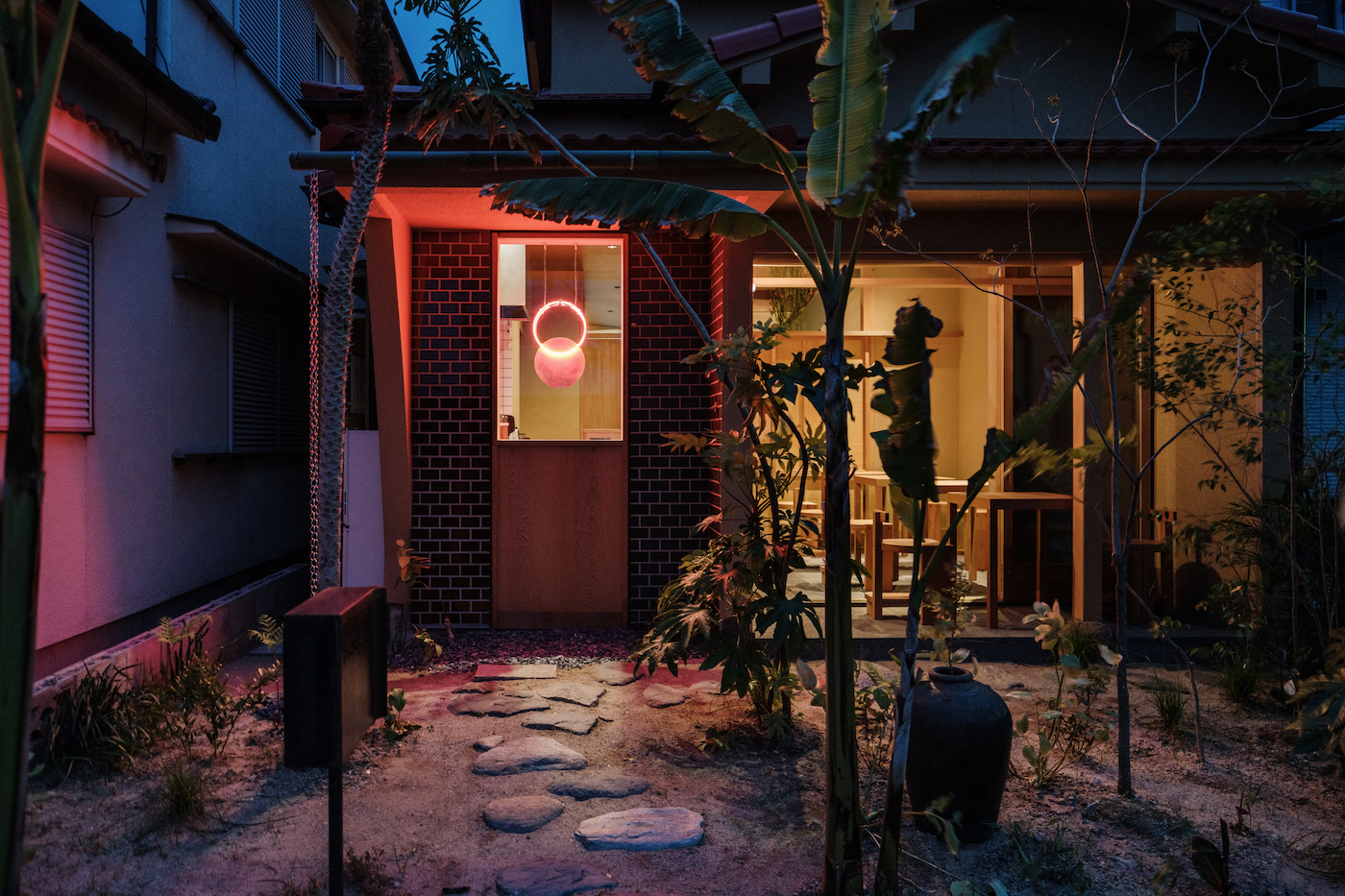カレーハウス バブルクンド
CURRY HOUSE Babbulkund
夕陽の美しい海辺に建つ木造住宅の一階に、その小さなカレー屋さんはある。
通りから庭の飛石を進んでいくと、ネオンサインが吊るされた木製窓に突き当たる。ここは既存住宅の玄関だった場所で、既存のタイルとそれに合わせて新設したタイルが〝元玄関〟の正面性を強調させている。視線を90度回転し、少し進むと、庭と繋がる半屋外テラスに辿り着く。既存の外壁を奥まらせてつくったこのテラスは、日本家屋の縁側のように室内と庭をひと繋ぎにする機能を持つとともに、この場所自体が気持ちの良い客席となる。テーブルや土壁の上にしゃらしゃらと揺れる木の葉の影が落ち、時折ふわりと蝶が迷い込む。見上げると、掻き落とし仕上げの曲面天井が空気を停滞させ、その先へ続く内部空間を暗示している。
店内は落ち着いた空間とするため、既存の窓を取り払うなど、意識的に光の経路を限定させた。木々の間から射す光、曲面天井を反射する光、簾から漏れる裏庭の光、住宅の吹き抜けから落ちる光など、透過、反射、回折によって届けられた繊細で気品ある光たちは土壁や敷瓦の表面を撫で、職人の手業を顕にする。
スリランカの海をイメージして、このお店のために製作したカレー皿は、青を基調とした数種類の釉薬の混ざり方によって、1枚1枚表情が異なる。そのマーブル模様は、皿の上で混ぜ合わせられる黄色いターメリックライス、数種類のカレー、数々の付け合わせと相俟って、食べる者の視覚を楽しませる。
客足も落ち着いた黄昏時、店の前の海岸では夕陽が砂浜を赤く染め上げる。夕陽と呼応するように、丸いネオンサインが「ジジジ」と微かな放電音を発しながら赤く灯っている。
⎯⎯赤い太陽が砂から昇って、又砂のなかへ赤く沈む。風が砂の小山を造っては、又それを平らかにして過ぎ去る。それは遠い世界の涯から持って来た多くのことをささやくが、人間には判らない言葉である。そこには只死んだような無言の寂寞がひとりで君臨している。バブルクンドの都というのは、ちょうどこんな砂漠のまんなかに在った。⎯⎯
稲垣足穂『黄漠奇聞』より
There is a small curry shop on the first floor of a wooden house on the seaside where the setting sun is beautiful.
If you follow stepping stones in the garden from the street, you will come to a wooden window with a hanging neon sign. This part used to be the entrance of the existing house, and the existing tiles and newly installed tiles emphasize the frontality of the “former entrance”. Here you turn 90 degrees and after a short distance you reach a semi-outdoor terrace connected to the garden. This terrace, which was created by recessing the existing outer wall, has the function of connecting the room and the garden like Engawa of a Japanese house, and this place itself becomes a comfortable dining hall. Shadows of swaying leaves fall on the table and earthen walls, and butterflies wander in from time to time. Looking up, the curved ceiling with a scraped finish stagnates the air, suggesting an interior space that extends beyond.
In order to create a calm space inside the store, I consciously limited the path of light by removing the existing window. Delicate and elegant light delivered through transmission, reflection, and diffraction, such as light shining through the trees, light reflecting off the curved ceiling, light leaking through the Sudare blinds in the backyard, and light falling through the atrium of the house, strokes the surface of earthen walls and Kawara tiles, revealing the handiwork of craftsmen.
The curry dishes created for this restaurant, inspired by the sea of Sri Lanka, have a different expression depending on how several types of blue-based glazes are mixed. The marble pattern, combined with the yellow turmeric rice, the various curries, and side dishes that are mixed together on the plate, is a visual feast for the eater.
At twilight when the number of customers has calmed down, the setting sun dyes the sandy beach red in front of the store. As if to echo the setting sun, the round neon sign emits a faint electric discharge sound and glows red.
The red sun rises from the sand and sets while dyeing the sand red again. The wind creates mounds of sand, flattens them again, and passes away. It whispers many things brought from the end of a distant world, but in a language that humans cannot understand. There is only dead, silent loneliness. The city of Babbulkund was right in the middle of such a desert.
Taruho Inagaki “The Strange Story of the Yellow Desert”
Location:Akashi, Hyogo
Type:Renovation
Usage:Restaurant
Structure:Wood
Floor area:20㎡
Completion:2023
Construction:Sasahara Construction
Landscape:abcde studio
Web:Instagram
Photo:Yosuke Ohtake
掲載 / Publications:
『ArchDaily』 2023.06.19 (Chile)
『Designboom』 2023.06.20 (Italy)
『Kiss PRESS』 2023.07.21 (Kobe, Japan)
『architecturephoto』 2023.08.04 (Japan)
『NOTESBOOK』 2023.08.17 (Vietnam)
『I SEE STUDIO』 2023.08.31 (Taiwan)
『TECTURE MAG』 2023.11.17 (Japan)
『Archello』 2024.01.29 (Netherlands)
『AD España』 2024.05.11 (Spain)
『ウラマヨ!』TV出演 2024.06.01 (関西テレビ)
『住宅建築』No.506 2024年8月号 / P.122~129 (建築思潮研究所)
『gestalten』2024.07 "Tasteful" / P.168~171 (Germany)
